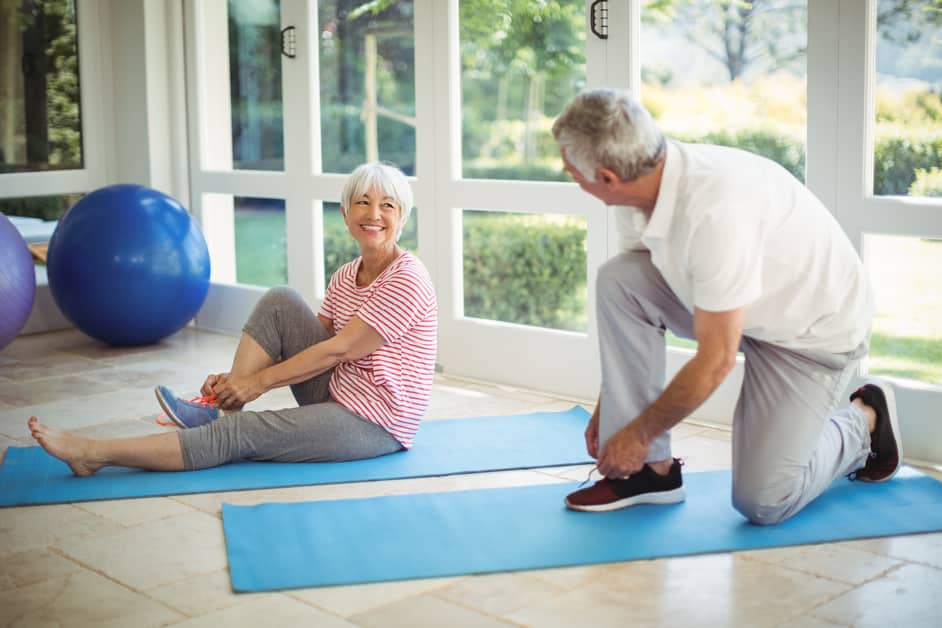Introduction
Knee pain? No problem! Finding the right shoes is key to keep your limbs healthy. Research your options and find a pair that meets your needs. The right shoes give cushioning and support, reducing strain on your knee – making it much easier.
This guide will provide you with the info you need to make a good decision when buying shoes for knee pain. Get movin’!
Types of Knee Pain
Knee pain can have many causes – inflammation, infection, fractures, and cartilage damage. The right shoes can give relief from pain, so it’s important to know what type of knee pain you have.
- Osteoarthritis: Shoes with arch support can help distribute pressure and reduce compression of joints. Look for sneakers with cushioning and features like shock-absorbers or air capsules for extra comfort.
- Rheumatoid arthritis: Shoes with cushioning and cutouts in midsoles for flexibility can help, as can heel wedges for stability. Ankle-supporting shoes may be required if the RA is causing stress on nearby joints/ligaments.
- Tendinitis: Look for loose but supportive shoes. They should have moderate stiffness, a soft toe box, and flexible, cushioned soles. Heel counters can help address tendinitis, but it’s important to consider the individual user and severity of their condition.
Benefits of Knee Pain-Friendly Shoes
When you have knee pain, finding the right shoes can help reduce symptoms and sometimes even cure it. There are various types of footwear designed with your comfort and health in mind. Here are the benefits:
- Reduced Impact: Shoes with shock-absorbing midsoles take stress off the joint and reduce inflammation.
- Extra Support: Knee pain-friendly shoes provide extra support to correct muscle imbalances and correct gait mechanics.
- Comfort: Knee-friendly shoes are made of softer materials and linings for cushioning and sweat absorption.
- Superior Traction: Manufacturers usually add more sole grip near the big toe for improved stability and fewer injuries.
Factors to Consider When Buying Knee Pain-Friendly Shoes
Knee pain can be horrid! But, don’t despair! Special shoes exist that can reduce the suffering. When shopping for these shoes, there are several key points to consider. Here, we’ll explore those factors, so you can buy wisely:
Level of cushioning
Cushioning is essential when it comes to knee-pain-friendly shoes. It supports the foot and bones, granting needed comfort and protection from bumps. Amounts of cushioning vary between shoe types, but a high level is preferred.
Memory foam is becoming popular for its arch and heel support, as well as shock absorption. It keeps its shape due to density, with some models offering 30% extra cushioning than usual materials. Gel inserts are an option too, for added comfort and protection. Insoles can safeguard feet and knees from pain.
Wide toe boxes also offer arthritis benefits. They stop pressure on joints from cramped toes or bad-fitting shoes. Look for shoes made for arch support, which aid in relieving strain on knees and feet when walking or standing for long.
Arch support
Arch support is key when buying shoes to help ease knee pain. It provides a solid base for your feet and absorbs shock when walking or running.
To figure out your arch type, wet the bottom of your foot and stand on a dry sheet of paper. The result will tell you if you have a neutral, low, or high arch. Use this info to select a shoe that gives cushioning, stability, or motion control based on your needs.
- Neutral shoes are best for average arches with some stability for higher ones.
- Low-arched feet should go for cushioned shoes with less stability.
- High-arched feet should choose motion control shoes with firmer midsoles.
Shock absorption
When choosing knee-friendly shoes, shock absorption is key. Inadequate shock absorption can cause knee pain, especially if you do a lot of running, jumping, or other high-impact activities.
Look for extra cushioning, enclosed heel caps, padding in the sole, and reinforced midsoles or foam gel inserts. If you’re a regular runner, get shoes specifically designed for running. They’ll offer extra support and comfort.
Heel height
When considering shoes if you suffer from knee pain, heel height is key. Flat shoes with no heel offer more stability. Most running shoes have a low heel, while casual shoes and boots have a higher one. Shoes with flexible soles and cushioning will help absorb impact. Experts say a low-heeled shoe (under 1 inch) is best for reducing knee stress. Athletic shoes are designed to provide comfort and stability when moving. Try them on before buying to ensure they fit and are comfortable. For extra arch support custom orthotics may help.
Motion control
Motion control shoes are all about pronation. Pronation is when your foot rolls inwards while walking or running. It can affect your gait and cause knee pain. So, it’s important to find a shoe with a firm but flexible sole.
Motion control shoes come with extra cushioning in the heel and arch area. Plus a firmer midsole and “orthotic-friendly” design. These features provide extra support for your feet. So, the strain on your knees is reduced with each step.
If you have severe pronation issues, it’s best to see a podiatrist before buying shoes. Most motion control footwear is great for anyone who suffers from knee pain due to walking or running.
Recommended Knee Pain-Friendly Shoes
Searching for shoes that are kind to knees is necessary. They offer comfort and backing to safeguard your joints. Bearing in mind the type of shoe, material and design is important when searching for the right shoes to reduce knee pain.
In this article, let’s review some of the best shoes that assist with knee pain:
Athletic shoes
Athletic shoes are designed to give cushioning and support. They can help with knee pain, providing you buy the right kind. Look for shoes with cushioning, arch support, ankle support, and flexibility. Runners need more cushioning than walkers.
For knee pain, there are a few shoe types:
- Stability Shoes: These are good if you overpronate. They have motion control and a stiff sole that won’t bend.
- Neutral Shoes: If no overpronating, get neutral running or cross training shoes without motion control.
- Trail Running Shoes: These are slip-proof, with double layers of cushioning and impact protection. Ideal for off-road running.
Get shoes with straps, breathable uppers, and good cushioning. Replace every 300-500 miles for optimum performance and comfort with knee pain.
Running shoes
Running shoes are a popular choice for those who want a good fit. They come in various styles, brands, and sizes. It is important to pick running shoes with proper cushioning and arch support. This helps protect the knees from taking the force of running or other physical activities.
The shoe should have a heel counter to provide support at the heel and arch area. Also, an upper that provides stability without hindering foot movement. Air mesh uppers that are breathable and lightweight layers for flexibility. A midsole of foam-cushioned material for bounce and arch supports made of soft but supportive foam. Make sure there’s enough toe room for your feet to move freely when running or walking.
Walking shoes
When it comes to finding shoes for knee pain relief, there are certain characteristics to consider. Look for:
- A wide toe box – This gives your toes more room and takes pressure off your feet.
- A supportive heel counter – This stabilizes the heel and lessens motion in the ankle.
- Good cushioning – Shock absorbers in the midsole reduce impact and ease the knee joint.
These features can be found in various styles, such as athletic shoes, boots, sandals, and slip-ons. Choose a shoe that works with your lifestyle; if it’s hard to wear, you won’t get the full benefit. Visit a store with knowledgeable staff who can help you find one that fits you.
Cross-training shoes
Cross-trainers are perfect for those with knee pain! They give you the best of both worlds – support, arch help and built-in stability. Plus, you get good motion and flexibility. Cross-trainers are also cheaper compared to other specialty shoes, so you can enjoy comfort on walks, runs and gym sessions without breaking the bank!
Popular cross-trainer brands include Nike’s Free line – designed for your foot’s natural expansion – and New Balance’s cardio kickboxing line – providing extra cushioning and support.
When choosing, look for:
- Airfoam midsoles that absorb shock;
- Inner rubber pockets for cushioning;
- Heel counters to stop overpronation; and
- Metal/plastic shanks in the midsole for strength.
Try on different pairs before buying, as everyone has different needs. Find the one that works best for you!
Conclusion
Finding shoes that reduce knee pain is key. Support, cushioning, and movement are needed. Buy a style that fits and matches your lifestyle. Enjoy comfort, reduce pain, and have fun!
Before buying, visit an orthopedic center or shoe store with experienced staff. Get fitting and advice. The wrong type of shoes can do harm. Take your time and get expert advice if needed.
Frequently Asked Questions
Q: What types of shoes are best for people with knee pain?
A: Shoes with cushioning, arch support and a low heel are usually best for people with knee pain. Shoes that offer good shock absorption and motion control features may also help reduce pain. Athletic shoes, such as running shoes, are often a good choice, as they provide added cushioning and support.
Q: Is it better to buy shoes with soft or hard soles?
A: Shoes with soft soles are generally more comfortable and provide more cushioning for your feet. Hard soles tend to provide less cushioning and are better for providing support for your feet.
Q: What should I consider when buying shoes for knee pain?
A: When buying shoes for knee pain, make sure they are well-fitted and have a low heel. Look for shoes with cushioning, arch support, and shock absorbing features. Athletic shoes are often a good choice, as they provide added cushioning and support.





